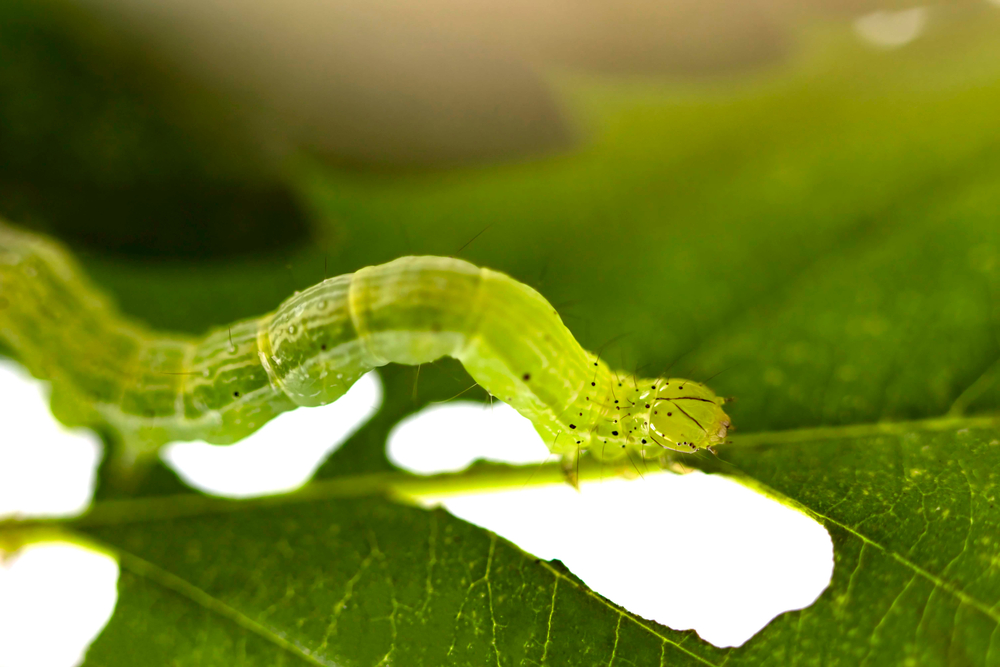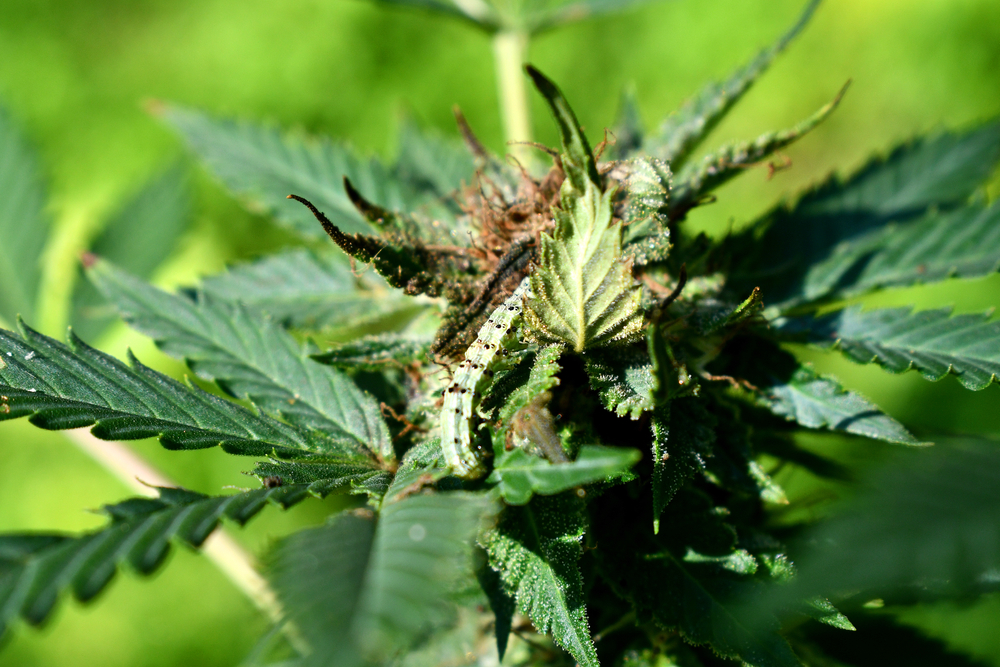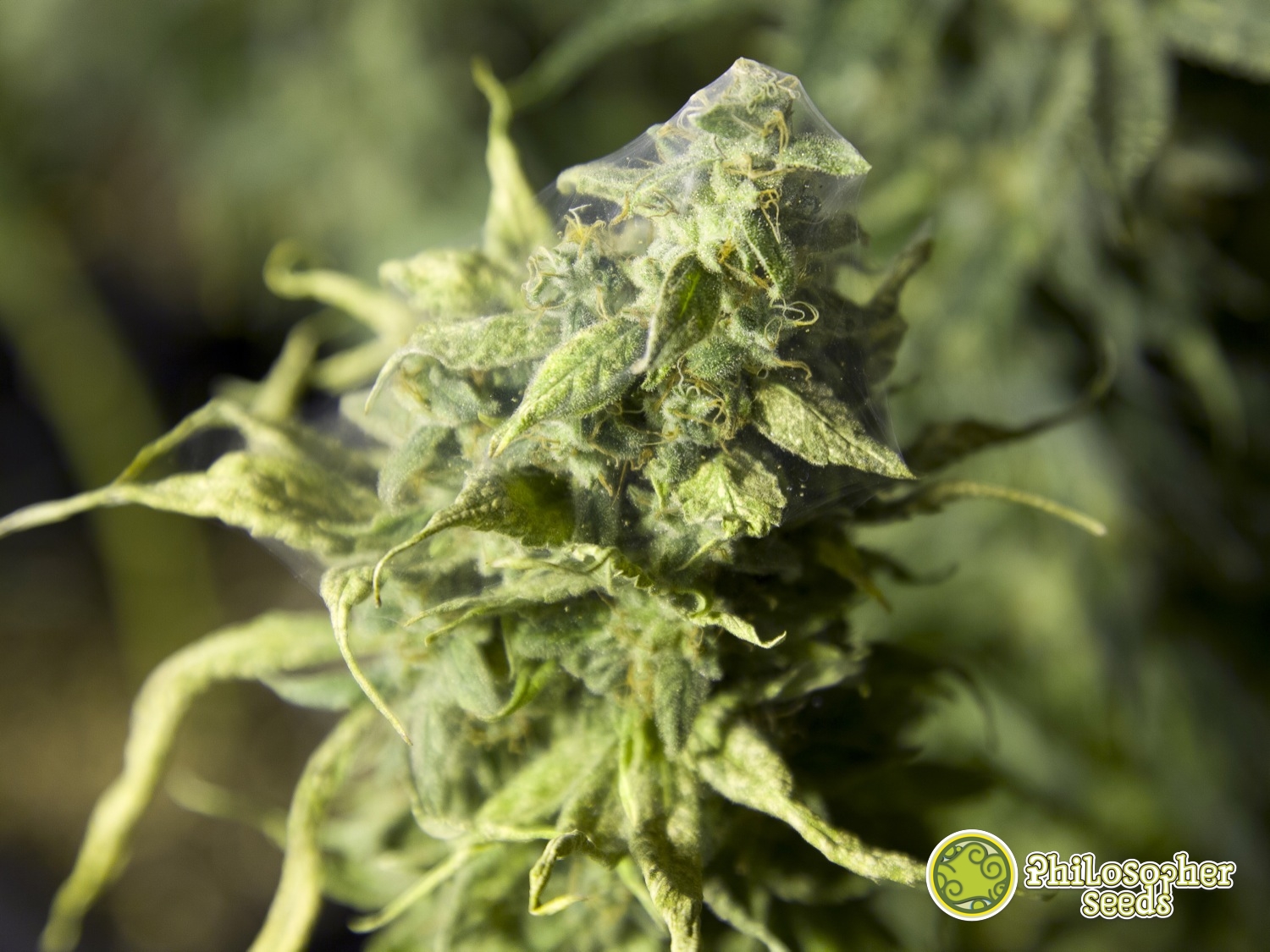Caterpillars and cannabis
List of contents
Growing cannabis outdoors faces several challenges, and among the most problematic pests are, as you probably know, caterpillars. These moth and butterfly larvae actively feed on leaves, stems, and buds, causing structural and aesthetic damage that directly affects the health and productivity of the plant, as well as attracting fungi such as the dreaded botrytis.
Exposure to natural environments facilitates the arrival of this pest, which usually increases during the warmer months. In addition to their visual and physical impact, caterpillars can cause secondary diseases in plants due to the wounds they leave, which open the door to infections caused by viruses or fungi. Today we explain how this threat acts on your plants and what you can do to keep it under control.

Reproduction of caterpillars and life cycle
Caterpillars are the larval stage of various types of Lepidoptera (butterflies and moths). The life cycle begins when adults lay their eggs on the leaves of cannabis plants. After several days, the eggs hatch, and the larvae emerge. At this stage, the caterpillar begins to feed aggressively in order to develop rapidly, a stage that can last for weeks, depending on the species and the ambient temperature.
When they reach maturity, the caterpillars transform into pupae and complete their metamorphosis into adults. Understanding their cycle is essential to planning prevention and control actions at the right time. Often, if you wait to treat the pest when it has already established itself, it is much more difficult to eradicate it; as we always say, prevention is key, and even more so with this pest in question.
Damage caused by caterpillars to cannabis plants
Caterpillars cause significant damage to cannabis plants, especially because they tend to eat vital tissues such as leaves and stems. This activity reduces the plant's photosynthetic capacity and weakens it, slowing growth and affecting the development of buds. In the case of flowers, the damage is direct and can be seen in punctures and chewed tissues that affect the quality of the harvest and attract various infections, such as botrytis, as we have already seen.
The organic residues that caterpillars leave on plants are also dangerous, as they can encourage the growth of fungi and bacteria that are harmful to cannabis, causing secondary diseases that can compromise the entire crop.

Preventing the appearance of caterpillars
To prevent the arrival of caterpillars in an outdoor cannabis crop, it is important to implement various strategies. Physical barriers, such as fine mesh over the plants, are one of the most effective solutions, as they prevent moths from laying their eggs on the leaves. Another preventive option is the use of repellent plants in the surroundings, such as rosemary and mint, whose smells deter insects. In addition, maintaining a biodiverse environment in the garden helps attract natural predators of caterpillars, such as parasitoid wasps.
Keeping the growing area clean, and free of plant debris and organic materials that can attract insects, also significantly reduces the risk of infestations. And, as we will see below, the use of products such as BT ( Bacillus Thutingiensis ) also represents an excellent option to prevent and treat this annoying pest, although we can tell you in advance: for it to be truly effective, the treatment must begin during the pre-flowering of the plants.
Pest prevention and management for cannabis plants
Pest prevention is crucial to get abundant harvests of top quality buds free from insects and/or moulds. By just taking a few easy steps, your plants will end their cycle and be ready to harvest in perfect conditions. In this article we tell you more about pest prevention and we present you some of the most widely used products to treat insect and fungal infections.
Fighting a caterpillar infestation
If caterpillars have already established themselves in the crop, there are several methods to combat them without compromising the quality of the harvest. One of the most effective and organic treatments, and one we have already seen, is the use of Bacillus thuringiensis (Bt), a bacterium that, when consumed by caterpillars, causes lethal intestinal infections without affecting other organisms or humans.
In addition, essential oils, such as neem oil, are natural repellents that can be applied directly to plants to scare away caterpillars and reduce their reproduction. Manual inspection is also important: removing caterpillars by hand or with tweezers allows you to maintain control without having to resort to chemicals. Biological insecticides are an option, although we recommend using specific cannabis products that do not alter the plant's flavor, and always respecting safety periods.
This approach to prevention and control will allow you to effectively manage a caterpillar infestation, protecting your plants from severe damage and maintaining a healthy and productive crop.
Happy harvest!







